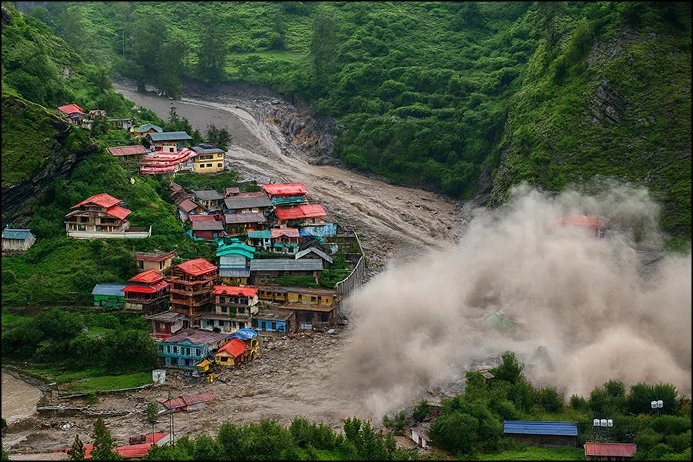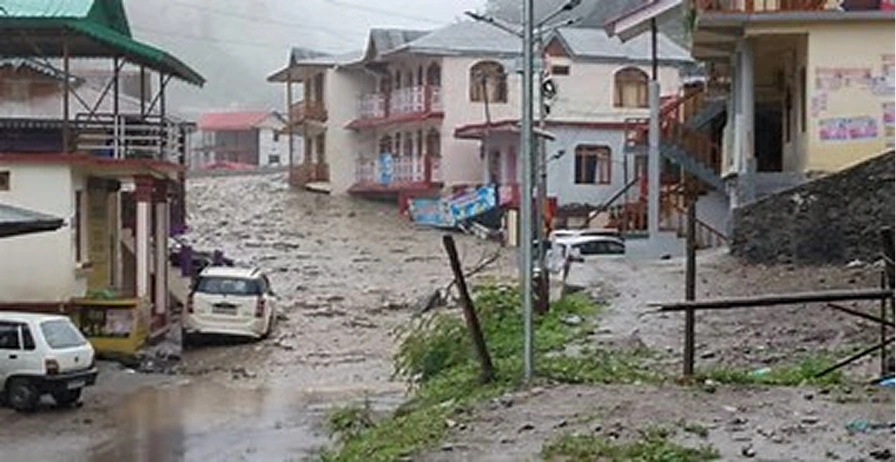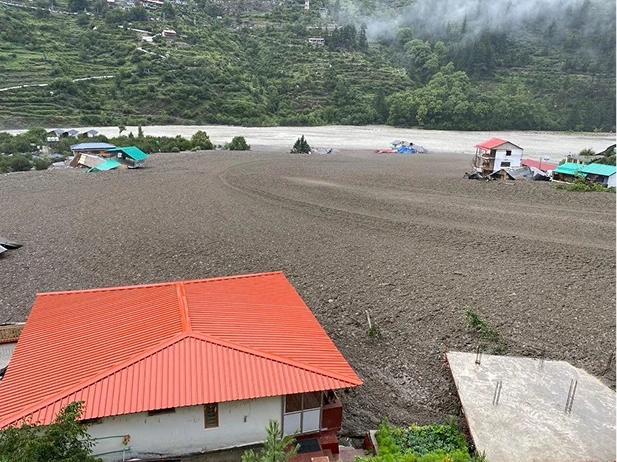A Peaceful Himalayan Hamlet Turned Into a Scene of Urgent Rescue

In the serene heights of Uttarakhand, the peaceful village of Dharali, nestled on the pilgrimage route to Gangotri Dham, found itself in the grip of nature’s fury. On August 5, 2025, a rare and intense cloudburst occurred in the Kheer Ganga catchment, unleashing sudden flash floods that swept through the region, leaving behind emotional scars, damaged structures, and disrupted lives.
While four individuals have been confirmed dead, the number of missing persons has risen to nearly 100, including 11 Indian Army personnel stationed in nearby Harsil. This event is not just a natural disaster—it is a story of resilience, coordinated relief, and hope.
What Caused the Flash Flood?
The India Meteorological Department (IMD) recorded over 210 mm of rainfall in just 24 hours, a significant spike over usual monsoon activity. The term “cloudburst” is used when rainfall exceeds 100 mm per hour over a localized area—leading to rapid and forceful flooding.
Experts suggest that the cause behind such events lies in a combination of monsoon intensification and the upper-level Western Disturbance, further intensified by climate change and topographical vulnerabilities in the Himalayan belt.
Human Impact: Evacuations, Missing Persons, and Shelter
The flash floods caused sudden water surges that washed away more than 50 hotels, homestays, and 40–50 houses. Tourism infrastructure in Dharali—once a haven for spiritual seekers and nature lovers—now stands in ruins.

However, thanks to swift and courageous efforts, over 130 people were safely evacuated by Indian Army troops, NDRF, SDRF, and local disaster authorities using helicopters and ground rescue equipment.
Amidst the devastation, stories of compassion continue to emerge—locals offering shelter, volunteers preparing food packets, and relief camps providing medical support. Schools and colleges remain safely shut in affected areas to prevent further risk.
Ground-Level Rescue Operations in Full Swing
More than 150 Army personnel, assisted by tracker dogs, drones, and heavy machinery, have been deployed to continue search and rescue operations. Relief teams are racing against time as continuous rainfall and blocked roads, especially on the Uttarkashi–Harsil route, have made access difficult.
The Indo-Tibetan Border Police (ITBP) and state police are working in coordination with air support teams to locate the missing, provide aid, and restore basic infrastructure.
Chief Minister Pushkar Singh Dhami promptly returned from Andhra Pradesh to monitor the situation and visit ground zero in Dharali. Prime Minister Narendra Modi has personally spoken with the Chief Minister and extended full Central Government support for relief and long-term recovery.
Eyewitness Voices: Stories from the Ground
Many residents compare the current scenario to the 2013 Kedarnath floods, with one survivor sharing,
“The river roared like a lion… we had no idea it was coming. People ran, screamed… then silence.”
Such personal accounts remind us that beyond the numbers lie human lives, shaken but determined to rebuild.
Local leaders estimate that 10–12 individuals may still be trapped, and up to 25 hotels have been entirely destroyed. The Army helipad and parts of the Harsil camp have also sustained damage.
Climate Warnings: Is This the New Normal?
Experts are drawing attention to the climate crisis that is silently unfolding in the Himalayan region. Increased deforestation, unregulated construction, and lack of environmental planning are amplifying the effects of natural events like cloudbursts.
“Nature isn’t angry,” says one environmental scientist, “It’s just reacting to how we’ve treated it.”
Such moments serve as a call to action for eco-conscious development, sustainable tourism, and climate resilience planning—especially in fragile ecosystems like Uttarakhand.

The Road Ahead: Relief, Healing, and Rebuilding
The immediate priority remains rescue and recovery. Relief camps have been set up with food, clean water, shelter, and medical services. The IMD has forecast continued rainfall till August 10, and authorities have issued alerts in vulnerable zones.
Helpline numbers and emergency control rooms have been made available for citizens, while local volunteers continue to support administration efforts on the ground.
In the long term, both state and central governments have committed to:
- Restoring damaged infrastructure sustainably
- Rehabilitating affected families
- Enhancing disaster preparedness
- Rebuilding with an eco-conscious approach
Conclusion: From Tragedy to Togetherness
What Dharali experienced is undoubtedly a tragedy, but it is also a testament to human spirit, unity, and environmental awareness. In the face of uncertainty, people came together—villagers, officers, medics, and volunteers—to protect lives and support each other.
Let this event not just be remembered for its destruction, but as a wake-up call to safeguard the Himalayan ecosystem and rethink our relationship with nature.
